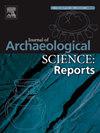从联合国教科文组织世界遗产地水牛跳的野牛长骨中提取古代线粒体 DNA
IF 1.5
2区 历史学
0 ARCHAEOLOGY
引用次数: 0
摘要
蒙头水牛跳(HSIBJ)是联合国教科文组织世界遗产,位于加拿大阿尔伯塔省麦克劳德堡附近的波库平山南端。数千年来,土著群体利用车道系统将成群的野牛赶过悬崖边缘。悬崖底部分层良好的沉积物为研究美洲野牛在与欧洲人接触之前的遗传多样性和 19 世纪的遗传瓶颈提供了一个独特的机会。我们从 21 块野牛长骨中提取了古 DNA,对线粒体 DNA 控制区进行了扩增和测序。通过比较古代野牛种群和现代野牛种群,我们发现 HSIBJ 种群中存在新的单倍型,这表明瓶颈期导致了遗传多样性的丧失。此外,我们还发现了在该遗址狩猎的野牛与现代野牛种群之间的共享单倍型,这可能有助于阐明野牛群的复杂历史。本文章由计算机程序翻译,如有差异,请以英文原文为准。
Ancient mitochondrial DNA extraction from Bison bison long bones from Head-Smashed-In Buffalo Jump, UNESCO World Heritage site
Head-Smashed-In Buffalo Jump (HSIBJ) is a UNESCO World Heritage Site located on the southern end of the Porcupine Hills, near Fort Macleod, Alberta, Canada. Using a system of drive lanes, Indigenous groups drove herds of bison over the cliff edge for thousands of years. The well-stratified deposits at the base of the cliff offer a unique opportunity to investigate the genetic diversity of the American bison before European contact and their genetic bottleneck in the 19th century. We extracted ancient DNA from twenty-one bison long bones, amplified and sequenced the mitochondrial DNA control region. Comparisons between ancient and modern bison populations revealed novel haplotypes in the HSIBJ population, suggesting a loss of genetic diversity due to the bottleneck. Furthermore, we discovered a shared haplotype between the bison hunted at the site and modern populations, which may help elucidate the complex history of living herds.
求助全文
通过发布文献求助,成功后即可免费获取论文全文。
去求助
来源期刊

Journal of Archaeological Science-Reports
ARCHAEOLOGY-
CiteScore
3.10
自引率
12.50%
发文量
405
期刊介绍:
Journal of Archaeological Science: Reports is aimed at archaeologists and scientists engaged with the application of scientific techniques and methodologies to all areas of archaeology. The journal focuses on the results of the application of scientific methods to archaeological problems and debates. It will provide a forum for reviews and scientific debate of issues in scientific archaeology and their impact in the wider subject. Journal of Archaeological Science: Reports will publish papers of excellent archaeological science, with regional or wider interest. This will include case studies, reviews and short papers where an established scientific technique sheds light on archaeological questions and debates.
 求助内容:
求助内容: 应助结果提醒方式:
应助结果提醒方式:


